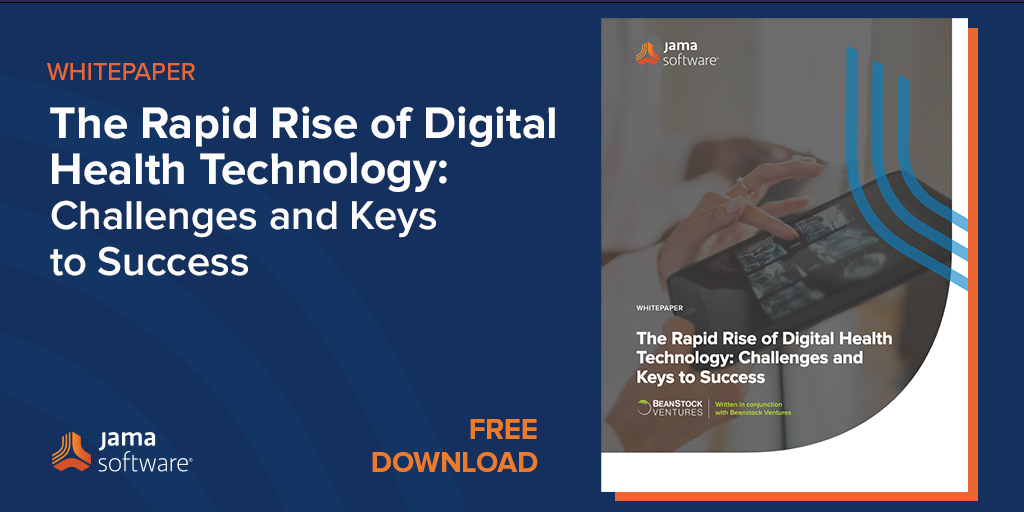
In this blog, we discuss key takeaways from a recent whitepaper written in conjunction with Beanstock Ventures on digital health technology.
What is Digital Health?
Digital health merges digital technologies with health, healthcare, living, and society to enhance the efficiency of healthcare delivery to make medicine more personalized and precise.
Digital health is a broad category that includes:
- Mobile health (mHealth)
- Health information technology (IT)
- Wearable devices
- Telehealth
- Telemedicine
- Personalized medicine
Digital health technologies use:
- Computing platforms
- Connectivity
- Software
- Sensors
RELATED POST: Ensuring FDA Compliance for Your Digital Health Solution
The Rise of Digital Health
The past decade has ushered in major disruption in all industries, including the medical device and life science sectors. Market disruptors such as smartphones, social media and more transformed the way that people work, play, and manage their health. Software has transformed how doctors practice medicine, how people manage their health, and the fundamental interactions between patients and providers. During this process, the boundaries between digital health and medical devices began to blur.
According to the Food and Drug Administration (FDA), “Digital health technologies use computing platforms, connectivity, software, and sensors for healthcare and related uses. These technologies span a wide range of uses, from applications in general wellness to applications as a medical device.” These applications are driving a lot of the wearables we see today, like a heart rate monitor running on a smart watch or a mobile application connected to a wearable. Other examples of digital health applications might be something like 23andMe, which uses genetic sequencing data to identify health risk factors.
The Emergence of Software as a Medical Device (SaMD)
Traditionally medical devices have been classified as an instrument, sometimes with software running on the actual device itself.
The lines between digital health technology and medical devices get crossed once the software technology begins to perform a medical function, especially if the technology is not embedded within the medical device. Consider software that determines the right medicine dose for a patient based on his or her personal data, or software that detects and diagnoses a stroke through analyzing MRI images. These are examples of software that could be serving as a medical device.
As digital health has pushed further and further into the traditional realm of medical devices, an entirely new category was formed and regulated, which is software as a medical device (known as “SaMD”). SaMD is described as “software that performs one or more medical functions. While the software may be embedded in a piece of hardware (as is often the case), it’s the software itself that performs the medical function.”
With the emergence of software as a medical device, there are questions around risks, regulations and safety. Understanding trends and potential risks can help teams mitigate challenges and navigate forward with greater success.
To learn more about keys to success and best practices in the digital health medical device market, download the full whitepaper.


 Mobile EMT
Mobile EMT In the developing world, child malnourishment is a pervasive and deadly problem. In India, a lack of centralization of the government’s nutrition centers limits their usefulness, leaving children in desperate need going without treatment.
In the developing world, child malnourishment is a pervasive and deadly problem. In India, a lack of centralization of the government’s nutrition centers limits their usefulness, leaving children in desperate need going without treatment.